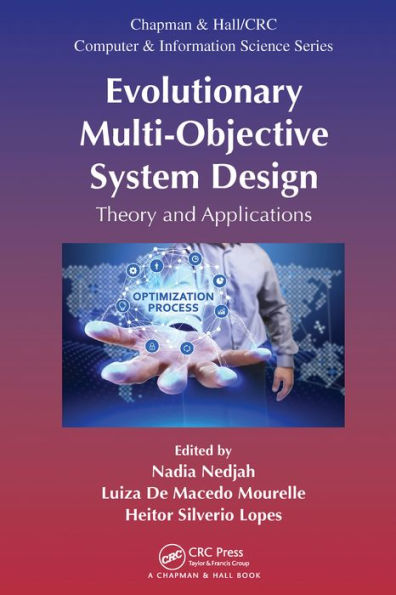Table of Contents
Embrittlement of Stainless Steel Coated Electrodes
Diego Henrique A. Nascimento, Rogerio Martins Gomes, Elizabeth Fialho Wanner, and Mariana Presoti
Introduction
Manufacturing Process
Process Modeling
Process Optimization
Final Remarks
Learning Fuzzy Rules from Imbalanced Datasets using Multi-objective Evolutionary Algorithms
Edward Hinojosa C., Heloisa A. Camargo, and Yvan Tupac V.
Introduction
Imbalanced Dataset Problem
Fuzzy Rule-Based Systems
Genetic Fuzzy Systems
Proposed Method: IRL-ID-MOEA
Experimental Analysis
Final Remarks
Hybrid Multi-Objective Evolutionary Algorithms with Collective Intelligence
Daniel Cinalli, Luis Marti, Nayat Sanchez-Pi, and Ana Cristina Bicharra Garcia
Introduction
Foundations
Preferences and Interactive Methods
Collective Intelligence for MOEAs
Algorithms
Experimental Results
Final Remarks
Multiobjective Particle Swarm Optimization Fuzzy Gain Scheduling Control
Edson B. M. Costa and Ginalber L. O. Serra
Introduction
Takagi-Sugeno fuzzy modelling
Fuzzy gain scheduling control
Experimental results
Glossary
Multiobjective evolutionary algorithms for smart placement
Renzo Massobrio, Jamal Toutouh, and Sergio Nesmachnow
Introduction
Vehicular Communication Networks
Materials and methods: metaheuristics, evolutionary computation and multiobjective optimization
RSU deployment for VANETs
Multiobjective Evolutionary Algorithms for the RSU-DP
Experimental Analysis
Final Remarks
Solving Multi-Objective Problems with MOEA/D and Quasi-Simplex Local Search
Lucas Prestes, Carolina Almeida, and Richard Goncalves
Introduction
Multi-objective Optimization Problems
Multi-Objective Evolutionary Algorithm based on DecompositionDi_erential Evolution
Quasi-Simplex Local Search
Proposed Algorithm - MOEA/DQS
Experiments and Results
Final Remarks
Multi-objective Evolutionary Design of Robust Substitution Boxes
Nadia Nedjah and Luiza de Macedo Mourelle
Introduction
Preliminaries for Substitution Boxes
Evolutionary Algorithms: Nash Strategy and Evolvable Hardware
Evolutionary Coding of Resilient S-Boxes
Evolvable Hardware Implementation of S-Boxes
Performance Results
Final Remarks
Multi-objective approach to the Protein Structure Prediction Problem
Ricardo H. R. Lima, Vidal Fontoura, Aurora Pozo, and Roberto Santana
Introduction
Protein Structure Prediction
The HP Model
Multi-objective Optimization
A bi-objective optimization approach to HP protein folding
Experiments
Final Remarks
Multi-objective IP Assignment for E_cient NoC-based System Design
Maamar Bougherara, Rym Rahmoun, Amel Sadok, Nadia Nedjah, Mouloud Koudil, and Luiza de Macedo Mourelle
Introduction
Related Work NoC Internal Structure
Application and IP Repository Models
The IP Assignment Problem
Assignment with MOPSO Algorithm
Objective Functions
Results
Conclusions



